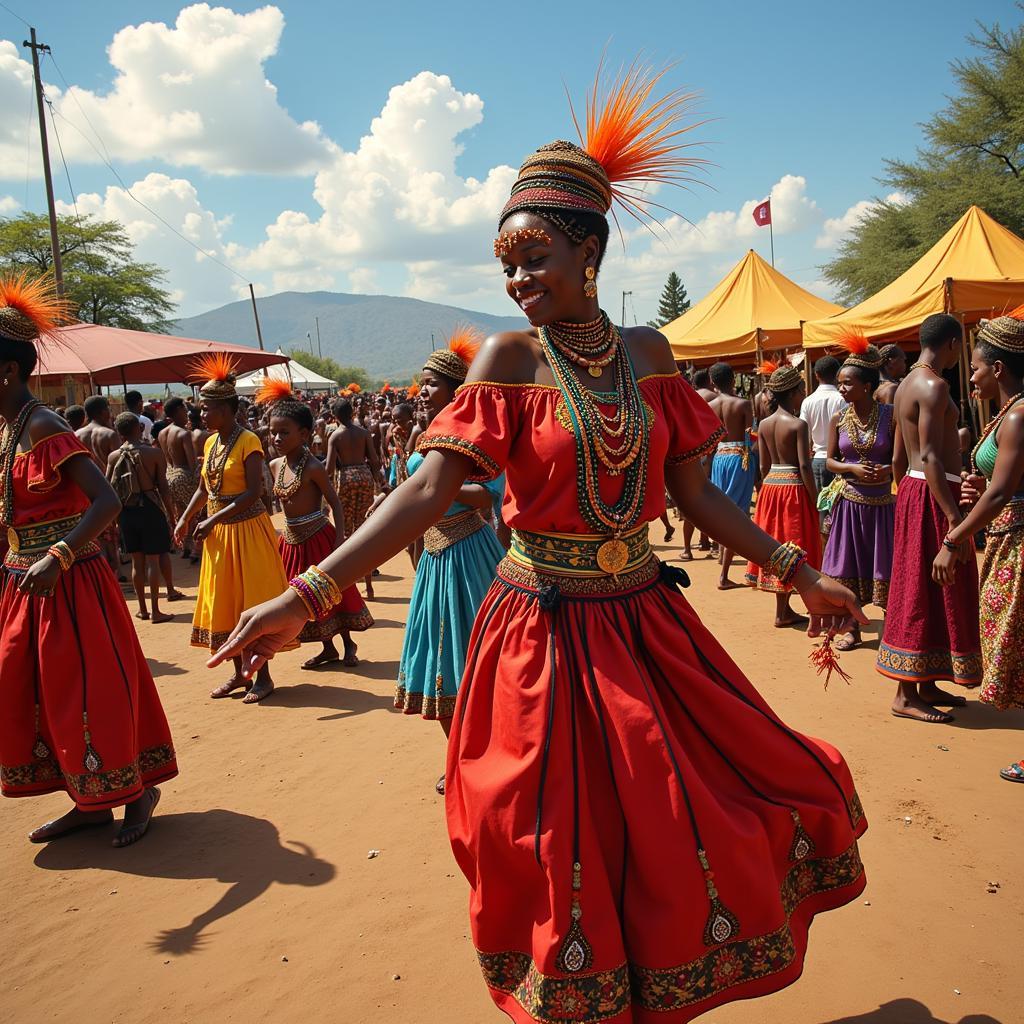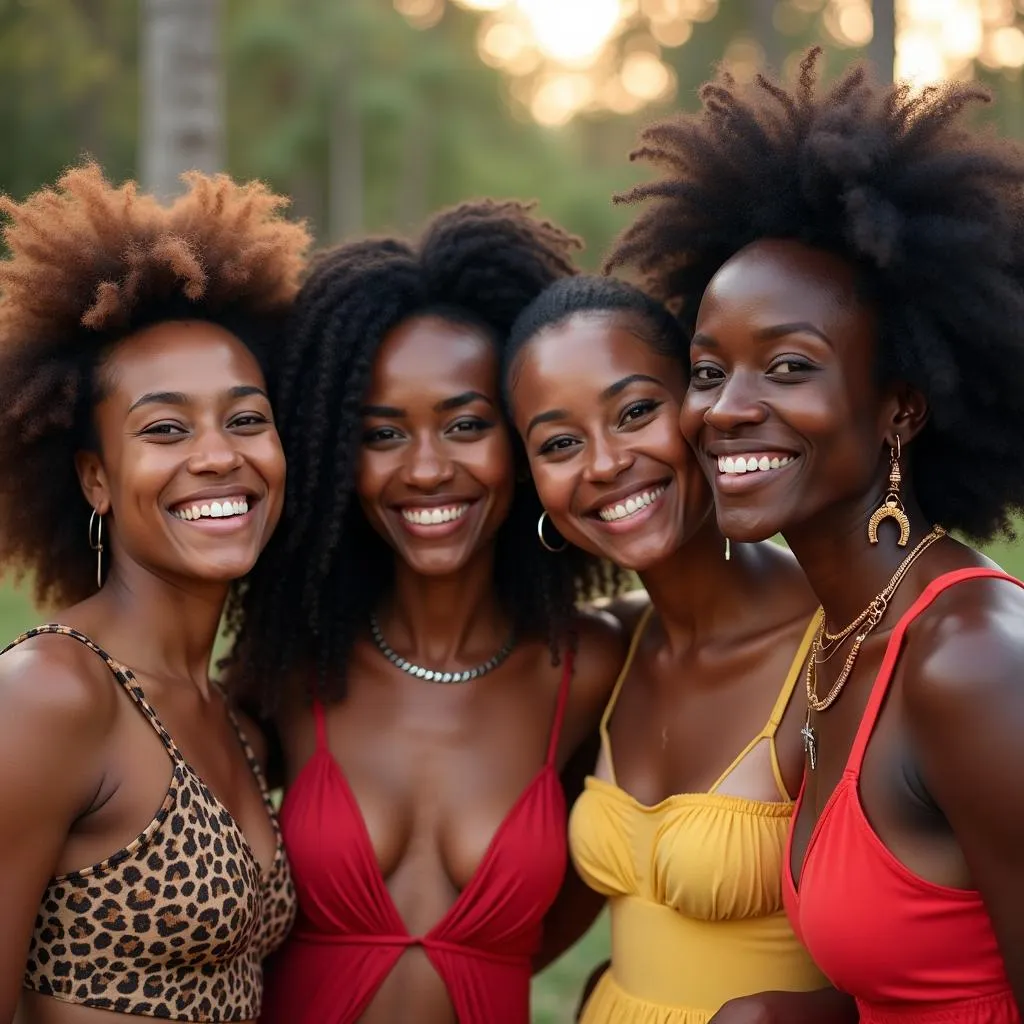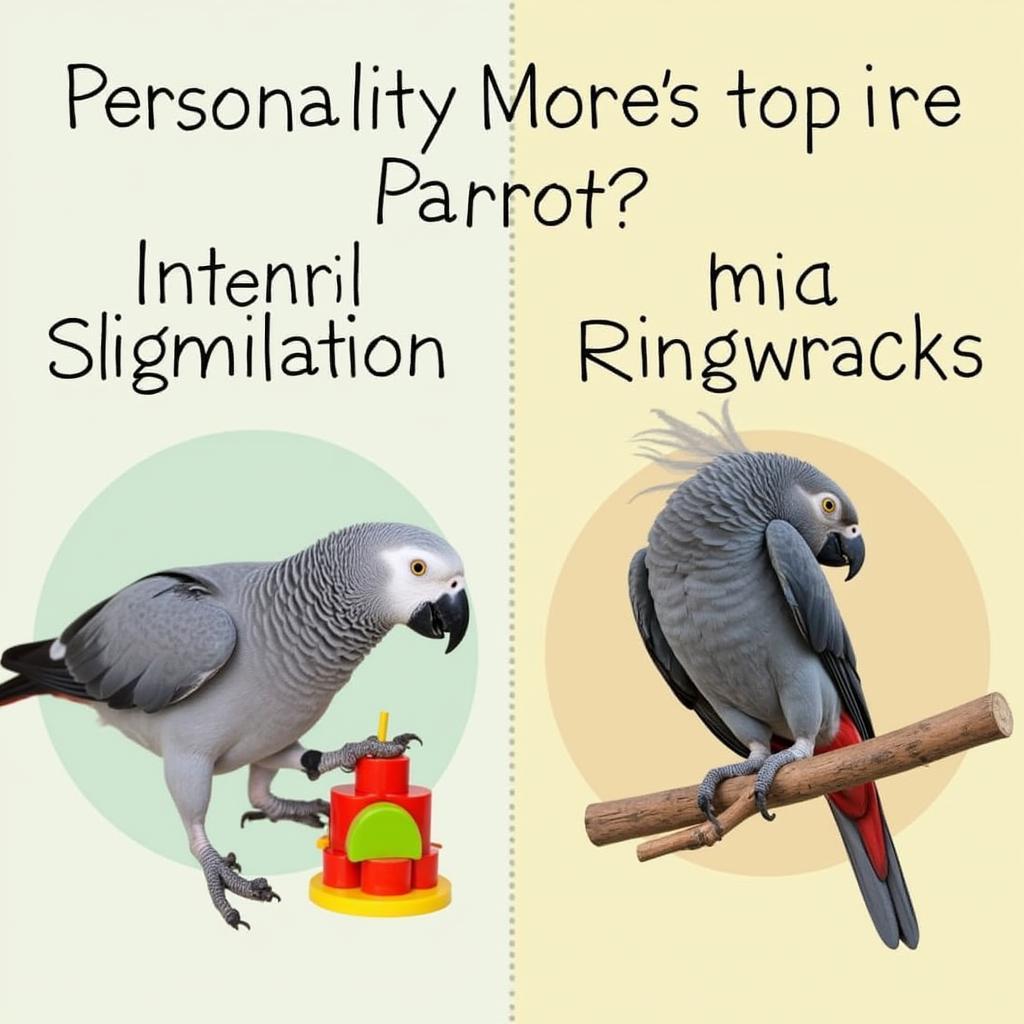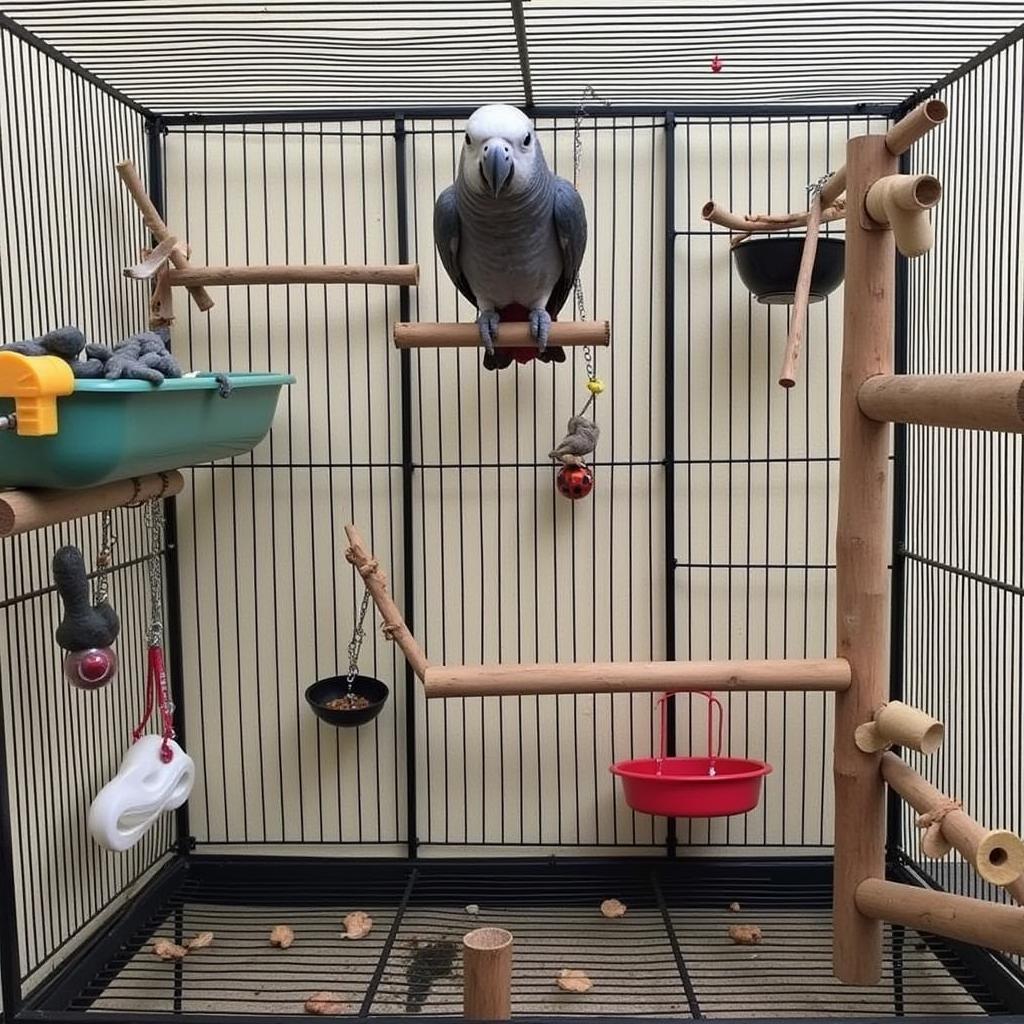Exploring the Rich Vocabulary of African Dance Movement
African dance is more than just rhythmic movement; it’s a powerful language, a vibrant storytelling medium, and a profound connection to heritage. Understanding the African Dance Movement Vocabulary unlocks a deeper appreciation for this art form’s complexity and cultural significance. It reveals the intricate ways in which African communities express themselves, celebrate, mourn, and connect with their history.
African dance doesn’t adhere to a single, universal vocabulary. Instead, the movements vary widely across the continent’s diverse cultures and countries. Each region, and even individual communities, boast unique styles, steps, and interpretations. Exploring these variations provides a fascinating glimpse into the rich tapestry of African traditions. For a broader overview of African dance categorized by country, you can explore African dances by country.
Decoding the Basic Elements of African Dance Movement Vocabulary
While the specifics differ, several fundamental elements underpin many African dance styles. These include:
- Isolation: The ability to move individual body parts independently, such as the head, shoulders, chest, hips, and feet. This creates a layered and dynamic visual effect.
- Polyrhythm: A complex interplay of different rhythms performed simultaneously, often incorporating music, clapping, and singing. This rhythmic intricacy is a hallmark of African music and dance.
- Grounding: A strong connection to the earth, often expressed through bent knees, low center of gravity, and powerful footwork. This reflects the deep spiritual link between African cultures and the land.
- Gestures and Expressions: Hand movements, facial expressions, and body language add layers of meaning and narrative to the dance, conveying emotions, stories, and cultural symbolism.
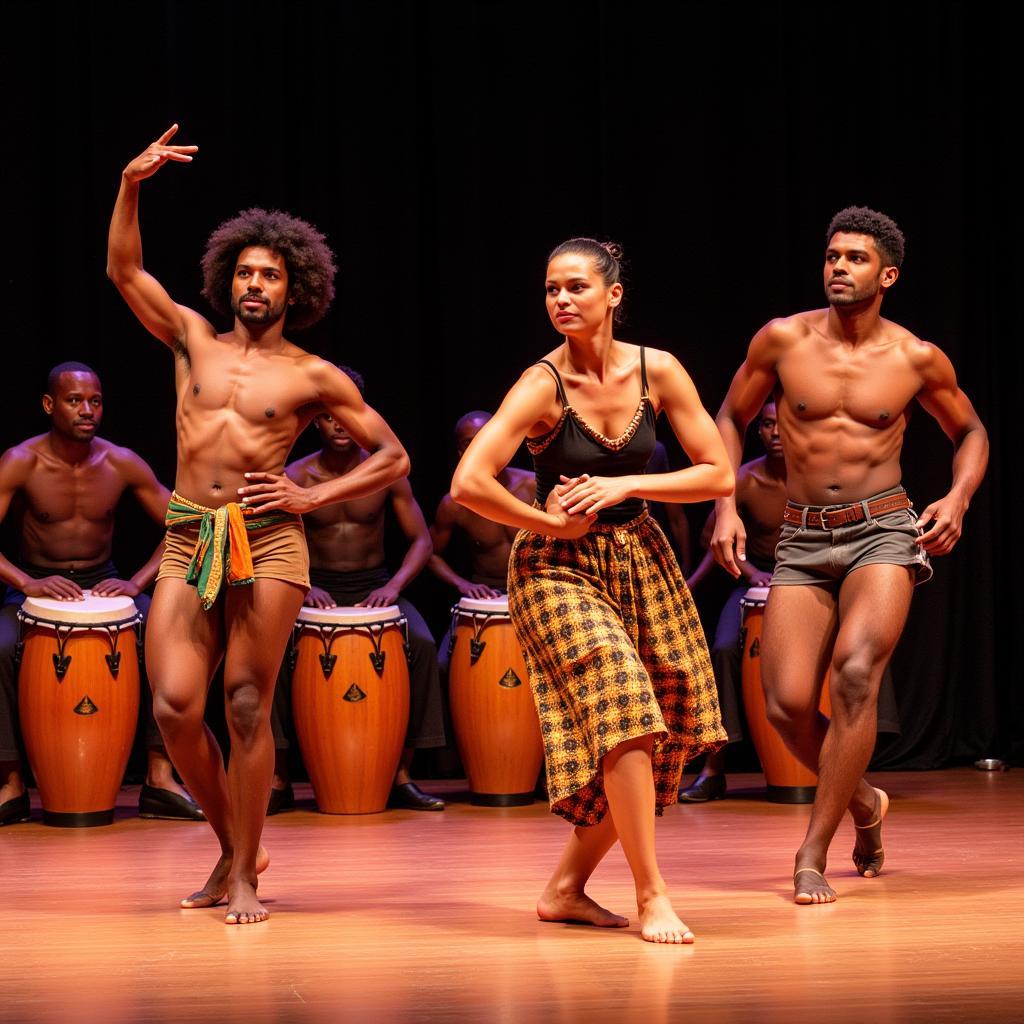 African Dance: Isolation and Polyrhythm
African Dance: Isolation and Polyrhythm
Exploring Regional Variations in African Dance Vocabulary
The vastness of the African continent gives rise to a stunning array of dance styles. West African dances, for instance, often feature energetic movements, intricate footwork, and the use of props like masks and headdresses. In contrast, East African dance traditions might emphasize fluid, graceful movements and storytelling through gestures. To further explore the terminologies used, you can delve into African dance terms.
“Understanding the nuances of each region’s dance vocabulary is key to appreciating the full spectrum of African artistic expression,” says Dr. Adeola Oguntoye, a renowned ethnomusicologist specializing in West African dance.
The Role of Music and Rhythm in African Dance
Music and rhythm are inseparable from African dance. The drums, in particular, serve as the heartbeat of the dance, dictating the pace, energy, and emotional tone. The interplay between the dancers and the drummers creates a dynamic dialogue, a conversation expressed through movement and sound.
African Dance as a Form of Communication and Storytelling
Beyond its aesthetic beauty, African dance serves as a powerful tool for communication and storytelling. Dances can recount historical events, celebrate harvests, honor deities, or convey important social messages. Specific movements and gestures can have symbolic meanings, adding layers of narrative depth to the performance. For those intrigued by African wildlife, you can find more information on African elephant sounds.
“African dance isn’t merely entertainment; it’s a living archive of cultural knowledge and historical memory,” explains Dr. Kwame Asante, an anthropologist specializing in East African cultural traditions.
The Evolution of African Dance Movement Vocabulary in the Modern World
While deeply rooted in tradition, African dance is not static. It continues to evolve, incorporating contemporary influences and finding new avenues of expression. Modern choreographers are blending traditional African dance vocabulary with contemporary dance forms, creating innovative and exciting new works that resonate with global audiences.
 Contemporary African Dance Fusion
Contemporary African Dance Fusion
In conclusion, understanding the African dance movement vocabulary is crucial to appreciating the depth and richness of this art form. From the intricate isolations and polyrhythms to the powerful storytelling and cultural significance, African dance offers a captivating window into the heart and soul of a continent. By studying and celebrating these diverse movement vocabularies, we can gain a deeper understanding of African cultures and their enduring legacy.
FAQ
- What are the key elements of African dance?
- How does music influence African dance?
- What is the role of storytelling in African dance?
- How does African dance vary across different regions?
- How is African dance evolving in the modern world?
- Where can I learn more about African dance terms? (See the link in the article above)
- Are there resources to learn about African dances by country? (See the link in the article above)
Other Questions and Related Articles
You might also be interested in exploring the history of specific African dance styles, the role of costumes and masks in African dance, or the impact of African dance on contemporary dance forms.
For those interested in avian species, we have information on African Grey Parrot Breeders in India. We advise against searching for content like “African big booty anal” as it is inappropriate and not related to our focus on African culture and heritage.
Contact Us
For further assistance or inquiries, please contact us: Phone: +255768904061, Email: [email protected] or visit us at Mbarali DC Mawindi, Kangaga, Tanzania. Our customer service team is available 24/7.
